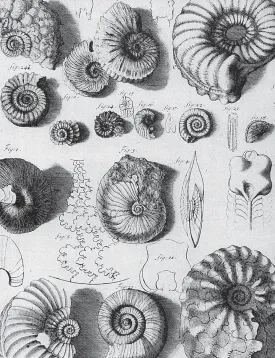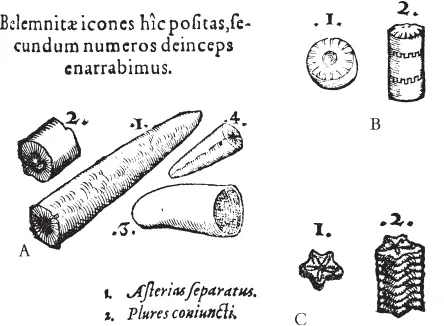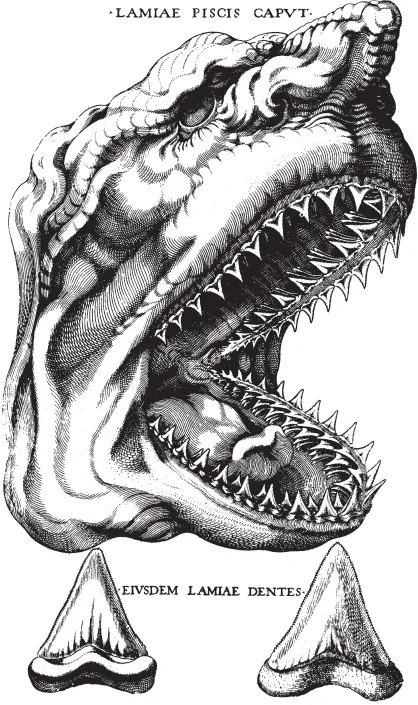
eBook - ePub
Bringing Fossils to Life
An Introduction to Paleobiology
Donald R. Prothero
This is a test
Buch teilen
- English
- ePUB (handyfreundlich)
- Über iOS und Android verfügbar
eBook - ePub
Bringing Fossils to Life
An Introduction to Paleobiology
Donald R. Prothero
Angaben zum Buch
Buchvorschau
Inhaltsverzeichnis
Quellenangaben
Über dieses Buch
One of the leading textbooks in its field, Bringing Fossils to Life applies paleobiological principles to the fossil record while detailing the evolutionary history of major plant and animal phyla. It incorporates current research from biology, ecology, and population genetics, bridging the gap between purely theoretical paleobiological textbooks and those that describe only invertebrate paleobiology and that emphasize cataloguing live organisms instead of dead objects. For this third edition Donald R. Prothero has revised the art and research throughout, expanding the coverage of invertebrates and adding a discussion of new methodologies and a chapter on the origin and early evolution of life.
Häufig gestellte Fragen
Wie kann ich mein Abo kündigen?
Gehe einfach zum Kontobereich in den Einstellungen und klicke auf „Abo kündigen“ – ganz einfach. Nachdem du gekündigt hast, bleibt deine Mitgliedschaft für den verbleibenden Abozeitraum, den du bereits bezahlt hast, aktiv. Mehr Informationen hier.
(Wie) Kann ich Bücher herunterladen?
Derzeit stehen all unsere auf Mobilgeräte reagierenden ePub-Bücher zum Download über die App zur Verfügung. Die meisten unserer PDFs stehen ebenfalls zum Download bereit; wir arbeiten daran, auch die übrigen PDFs zum Download anzubieten, bei denen dies aktuell noch nicht möglich ist. Weitere Informationen hier.
Welcher Unterschied besteht bei den Preisen zwischen den Aboplänen?
Mit beiden Aboplänen erhältst du vollen Zugang zur Bibliothek und allen Funktionen von Perlego. Die einzigen Unterschiede bestehen im Preis und dem Abozeitraum: Mit dem Jahresabo sparst du auf 12 Monate gerechnet im Vergleich zum Monatsabo rund 30 %.
Was ist Perlego?
Wir sind ein Online-Abodienst für Lehrbücher, bei dem du für weniger als den Preis eines einzelnen Buches pro Monat Zugang zu einer ganzen Online-Bibliothek erhältst. Mit über 1 Million Büchern zu über 1.000 verschiedenen Themen haben wir bestimmt alles, was du brauchst! Weitere Informationen hier.
Unterstützt Perlego Text-zu-Sprache?
Achte auf das Symbol zum Vorlesen in deinem nächsten Buch, um zu sehen, ob du es dir auch anhören kannst. Bei diesem Tool wird dir Text laut vorgelesen, wobei der Text beim Vorlesen auch grafisch hervorgehoben wird. Du kannst das Vorlesen jederzeit anhalten, beschleunigen und verlangsamen. Weitere Informationen hier.
Ist Bringing Fossils to Life als Online-PDF/ePub verfügbar?
Ja, du hast Zugang zu Bringing Fossils to Life von Donald R. Prothero im PDF- und/oder ePub-Format sowie zu anderen beliebten Büchern aus Sciences physiques & Géologie et sciences de la Terre. Aus unserem Katalog stehen dir über 1 Million Bücher zur Verfügung.
Information
PART I
THE FOSSIL RECORD

A Window on the Past
CHAPTER 1
THE FOSSIL RECORD

In the mountains of Parma and Piacenza multitudes of rotten shells and corals are to be seen, still attached to the rocks … And if you were to say that such shells were created, and continued to be created in similar places by the nature of the site and of the heavens, which had some influence there—such an opinion is impossible for the brain capable of thinking, because the years of their growth can be counted on the shells, and both smaller and larger shells may be seen, which could not have grown without food, and could not have fed without motion, but there they could not move.
And if you wish to say that it was the Deluge which carried these shells hundreds of miles from the sea, that cannot have happened, since the Deluge was caused by rain, and rain naturally urges rivers on towards the sea, together with everything carried by them, and does not bear dead objects from sea shores towards the mountains. And if you would say that the waters of the Deluge afterwards rose above the mountains, the movement of the sea against the course of the rivers must have been so slow that it could not have floated up anything heavier than itself.
—Leonardo da Vinci, c. 1500


FIGURE 1.1 Seventeenth-century illustration of fossil ammonoids (Cornua ammonis, or “snake stones”) drawn for the posthumously published monograph of Robert Hooke (1703). Hooke was one of the most versatile scientists of his time and the father of both paleontology and microscopy in Britain.
WHAT IS A FOSSIL?

When we pick up fossils in a roadcut or see a dinosaur skeleton in a museum, we have no problem connecting it to some sort of extinct organism. We have been conditioned since our early education to interpret fossils as remains of extinct organisms, and it is hard for us to imagine any other explanation.
Centuries ago, however, such an interpretation was not automatic or even easy to make. The ancient Greeks interpreted the giant bones of mammoths as the remains of mythical giants, but were puzzled by seashells found hundreds of feet above sea level and miles inland. Had the sea once covered the land, or had these objects grown within the rocks as crystals do? In the sixth century B.C., Xenophanes of Colophon saw the seashells high in a cliff on the island of Malta and suggested the sea had once covered the land. The oldest recorded statement that fossils are the remains of once-living animals that were entombed in rocks was made by Xanthos of Sardis around 500 B.C. Aristotle (b. 384 B.C.) suggested that the fossils of fish were remains of sea animals that had swum into cracks in rocks and were stranded there, and his ideas were influential for the next 2000 years.
From the late days of the Roman Empire, almost all people in European society were raised to believe in the literal interpretation of the book of Genesis, and the stories of the 6 days of Creation and Noah’s Flood colored their view of rocks and fossils. For those of us at the beginning of the twenty-first century, a fossil snail shell looks so similar to its living descendants that we cannot imagine any other explanation. We forget that most people of that time (other than fishermen) had limited familiarity with life on the bottom of the ocean. In fact, many fossils bear no resemblance to anything that fifteenth-century Europeans could have seen. Until the living chambered nautilus was discovered in 1829, who could imagine the coiled objects known as Cornua ammonis (Horns of Ammon) or “serpent stones” were relatives of the squid and octopus with a coiled, chambered shell (fig. 1.1)? Who could imagine that the strange bullet-shaped objects known as belemnites (fig. 1.2) were also related to squid? Even today, most people who pick up the odd cylindrical objects known as crinoid columnals (fig. 1.2) do not recognize them as relatives of the sea star or sea urchin, because only a few people have seen the rare stalked crinoids that still live on the seafloor. For centuries, scholars were impressed with the star-shaped patterns in the centers of the columnals (and the radial patterns in fossil corals) and thought they had been produced by thunderbolts or had fallen from the sky; they were known as “star stones” (Lapis stellaris or Astroites stellis).


FIGURE 1.2 Conrad Gesner’s 1565 illustrations of bullet-shaped belemnites and crinoid columnals, neither of which looked like marine organisms familiar to Renaissance Europeans. To many of them, including Gesner, the star-like pattern of some crinoid stems suggested that they might be produced by falling stars.
During the Middle Ages and Renaissance, learned men began to speculate on the meaning of fossils, producing a wide range of interpretations. Originally, the word “fossil” (from the Latin fossilis, “dug up”) applied to any strange object found within a rock. These included not only the organic remains that we call fossils, but also crystals and concretions and many other structures not organic in origin. Most scholars thought that fossils had formed spontaneously within the rock; those that resembled living organisms were thought to have crept or fallen into cracks and then converted to stone. Others thought they were grown in rocks from seeds or were grown from fish spawn washed into cracks during Noah’s Flood. Many scholars thought they were supernatural “pranks of nature” (lusus naturae) or “figured stones” produced by mysterious “plastic forces.” Still others considered them to be works of the Devil, placed in the rocks to shake our faith. As quaint and comical as these ideas seem to us today, in their own time they were perfectly rational for people who believed in a literal interpretation of Genesis, and thought the earth had been created just as we see it about 6000 years ago, with little or no change since then, except for decay and degradation due to Adam’s sin.
Some Renaissance men, however, were ahead of their time. Around 1500, Leonardo da Vinci (1452–1519) recognized that the fossil shells in the Apennine Mountains of northern Italy represented ancient marine life, even though they were miles from the seashore. Unlike his contemporaries, who thought the fossils had been washed there by the Flood, da Vinci realized that they could not have washed that far in 40 days, and many shells were too fragile to have traveled that far. Many shells were intact and in living position and resembled modern communities found near the seashore; clearly they were not transported. In some places, there were many shell beds separated by unfossiliferous strata, so they clearly were not due to a single flood. However, most of da Vinci’s ideas remained in his unpublished notebooks. Even if he had tried to publicize them, they would not have been accepted at that early date.
In 1565, the Swiss physician Conrad Gesner (1516–1565) published De rerum fossilium (“On the nature of fossils”), the first work that actually illustrated fossils. With this step, the vague verbal descriptions of earlier authors could be made more precise (fig. 1.2). Gesner based his descriptions on both his own collections and those of his friends, beginning the modern tradition of scientific exchange, analysis, and comparison. Gesner was correct in comparing most fossils with their living relatives, but he thought that some objects (crinoid columnals, belemnites) were formed by mineral precipitation. Like most of his contemporaries, Gesner interpreted fossils as supernatural representations of Neoplatonic “ideal forms” and did not explore most of the implications that would seem obvious to us today.
Through all of these early writings, four main questions about fossils were disputed:
1. Are fossils really organic remains?
2. How did they get into the rocks?
3. When did they get there—as the rock was being formed or long after?
4. How did they become petrified?
Essentially modern answers to all these questions were first proposed by a Dane named Niels Stensen, known to later generations by the Latinized version of his name, Nicolaus Steno (1638–1686). Steno was the court doctor to the Grand Duke of Tuscany, so he was one of the most scientifically educated people of his time. He also had ample opportunity to see the shells in the rocks of the Apennine Mountains above Florence. In 1666, he had a chance to dissect a large shark caught near the port town of Livorno. A close look at the mouth of the shark showed that its teeth closely resembled fossils known as “tongue stones” (glossopetrae), which had been considered the petrified tongues of snakes or dragons (fig. 1.3). Steno realized that tongue stones were actually ancient shark teeth, and that fossil shells were produced by once-living organisms.


FIGURE 1.3 Steno’s 1669 illustration of the head of a shark, showing that the “tongue stones” or glossopetrae are extremely similar to modern shark teeth.
In 1669, Steno published De solido intra solidum naturaliter contento dissertationis prodromus (“Forerunner to a dissertation on a solid naturally contained within a solid”). The title may seem peculiar at first, until you realize the central problem that Steno faced: How did solid objects (such as fossils or crystals) get inside solid rock? Steno realized that the enclosing sandstone must have once been loose sand and was later petrified into sandstone. With this idea, he overturned the longstanding assumption that all rocks had been formed exactly as we see them during the first days of Creation. Steno extended this insight into a general understanding of relative age of geologic features. Fossils enclosed in rock that had been molded around them must be older than the rock in which they lie. On the other hand, crystals that clearly cut across the pre-existing fabric of a rock must have grown within the rock after it formed. From this, Steno generalized the principles of superposition, original horizontality, and original continuity that are the fundamental principles of historical geology and stratigraphy.
As the Prodromus was being published, Steno converted to Catholicism and gave up his scientific interests, so the “forerunner” was never followed by the promised dissertation. He was eventually made the Bishop of Titiopolis, a region in eastern Europe that had not converted to Catholicism, so he never lived there or ministered to its people. Instead, he returned to Denmark to serve the Church for the rest of his life.
About the time that Steno’s writings appeared, a pioneering British scientist came to similar conclusions. Robert Hooke (1635–1703) is better known as the “Father of Microscopy,” because he built one of the first microscopes and made the first drawings of microorganisms and the details of cellular structure. In 1665, Hooke made observations of many natural objects, including the first accurate drawings of fossils, which were published posthumously in 1705 (fig. 1.1). Hooke even suggested that fossils might be useful for making chronological comparisons of rocks of similar age, much as Roman coins were used to date ancient historical events in Europe. He speculated that species had a fixed “life span,” for many of the fossils he stu...